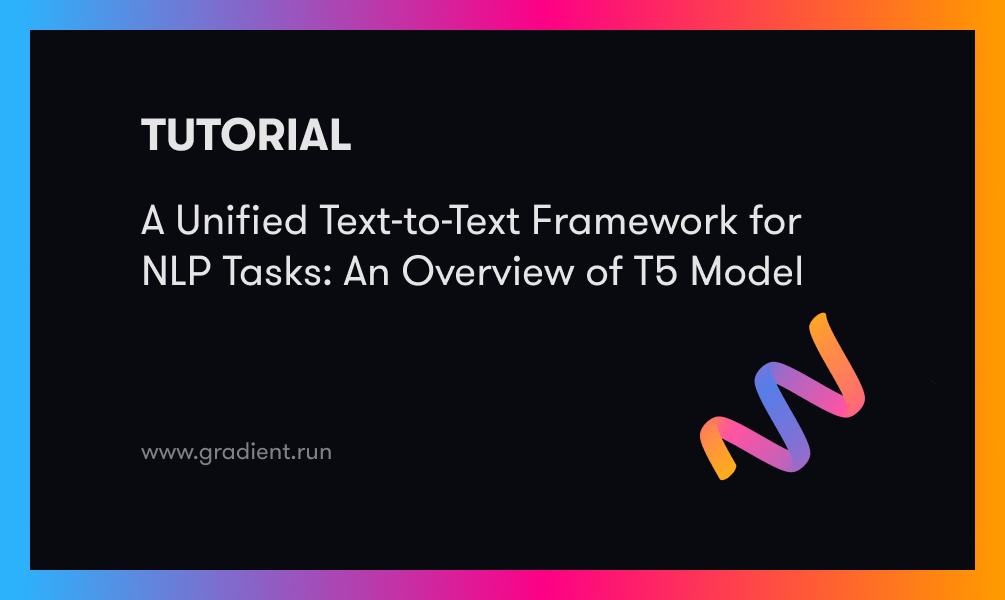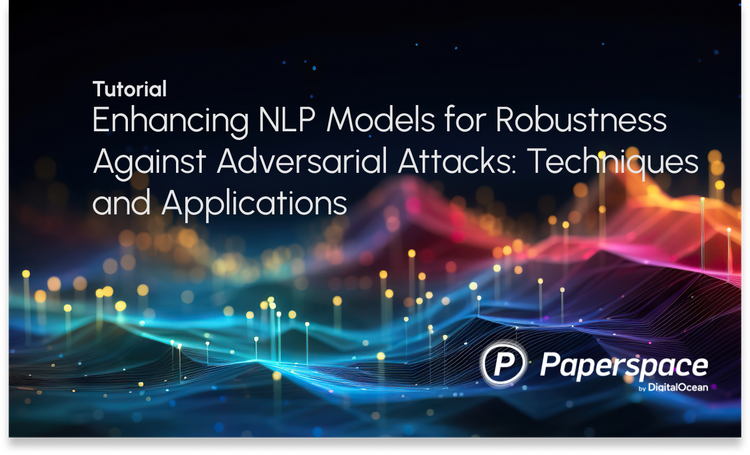Architecture of T5 model
The basis of the encoder-decoder design of the T5 model is the Transformer model developed by Vaswani et al. (2017). The Transformer model is different from other models that use recurrent or convolutional neural networks because it is exclusively reliant on attention processes (Vaswani, 2017).
Pretrained sequence-to-sequence transformer models such as T5 (Sarti & Nissim, 2022) are quite common. It was originally proposed in 2020 (Sarti & Nissim, 2022) by Raffel et al. All target tasks in the T5 model are recast to sequence-to-sequence tasks according to the text-to-text paradigm (Sarti and Nissim, 2022). To improve on previous models such as BERT, which used only encoders, T5 uses a generative span-corruption pre-training task and an encoder-decoder architecture. (Jianmo et al., 2021). Because of this, T5 is able to produce outputs in addition to the encoding of the inputs.
Because of its built-in self-attention mechanism, the T5 model is able to accurately capture inter-word dependencies. To ensure that the model pays attention to the most important information during encoding and decoding, it computes attention weights for each word based on its connection to other words in the sequence (Vaswani, 2017). Training and inference times for the T5 model are reduced due to the parallelization enabled by the attention mechanism (Vaswani, 2017).
The T5 model's outstanding performance on a variety of NLP tasks is the result of a number of design decisions and hyperparameters that have been carefully tuned. A replication study of BERT pretraining was undertaken by Liu et al. (2019), who emphasized the importance of hyperparameters and training data size. This research discusses why these specific design considerations are so critical to getting optimal performance.
Pretraining and fine-tuning Phase
There are two stages to the training process of the T5 model: pre-training and tuning. In the pretraining phase, a self-supervised task, such as completing sentences with masked words, is used to train the model(Mastropaolo et al., 2021). This allows the model to learn abstract linguistic representations. The pre-trained model is then fine-tuned using task-specific datasets that are smaller and more specialized (Mastropaolo et al., 2021). Through this process of fine tuning, the representations of the model are improved so that they are better suited to the tasks at hand.
Performance and Applications of T5 Model
The T5 model has been shown to perform very well on a variety of NLP tasks, particularly in few-shot environments (Brown et al., 2020). It has been shown to outperform previous state-of-the-art models and ensembles on a variety of benchmarks, including GLUE, RACE, and SQuAD (Liu et al., 2019).
The T5 model has an excellent performance in machine translation. The machine translation system BART, a variation of T5, was reported by Lewis et al. (2020) to have improved by 1.1 BLEU when compared to a back-translation system.
In addition to translation, T5 has also been shown to be useful for automated summarization and code-related tasks. State-of-the-art results on abstractive dialogue, question-answering, and summarization tasks were shown by Lewis et al. (2020) using the T5 model-based BART, with improvements of up to 3.5 ROUGE. Improved performance above baseline was found in an investigation of the use of T5 for coding-related tasks by Mastropaolo et al. (2021).
T5 model has also been handled to few-shot scenarios. Brown et al. 2020) trained GPT-3, an autoregressive language model based on T5, with 175 billion parameters and tested its performance in few shot settings. Results showed strong performances by the model without any gradient updates or fine-tuning, but just through text interaction with the model.
The T5 model has also been extended to take on larger-scale tasks. Significant gains in pre-training time were achieved by using the training methods provided by Fedus et al. (2021), which enable the training of large sparse models using lower precision formats. The T5 model has been found to scale well across multiple languages (Fedus et al., 2021), providing evidence of its scalability.
The T5 model has been shown to outperform the state-of-the-art in a variety of NLP tasks (Liu et al., 2019). Zheng (2020) and Ciniselli (2021) detail its effective implementation in a variety of contexts, including language translation, sentence classification, code completion, and podcast summarization. Over a hundred different languages are now supported by T5 (Sarti & Nissim, 2022).
Fine-tune T5 using the Spider dataset
T5 is trained on the 7000 training examples available in the Spider text-to-SQL dataset to achieve optimal performance. The Spider dataset contains both free-form text queries and their corresponding structured data (SQL) counterparts. T5-3B served as the baseline for this model, which was then fine-tuned using the text-to-text generation objective.
The model is trained to predict the SQL query that would be used to answer a question based on the question's underlying database structure. User-provided natural language question, database ID, list of tables and their columns constitute the model's input.
Simple demo
You can follow these steps to build a web app that uses T5 and the Spider dataset to translate text into SQL queries:
1.Get the required library packages installed:
- Transformers:
pip install transformers Gradio: pip install gradio
- Import the necessary libraries:
import gradio as gr
from transformers import T5ForConditionalGeneration, T5Tokenizer- Load the dataset
from datasets import load_dataset
dataset = load_dataset("spider")
print(dataset)
- Load the T5 model and tokenizer:
model_name = "tscholak/cxmefzzi"
model = T5ForConditionalGeneration.from_pretrained(model_name)
tokenizer = T5Tokenizer.from_pretrained(model_name)
- model_name = "tscholak/cxmefzzi: This line identifies the T5 model that will be loaded. In this particular instance, "tscholak/cxmefzzi" has been specified as the model name. The particular model name is associated with a pre-trained T5 model that is accessible through the Hugging Face Model Hub.
- model = T5ForConditionalGeneration.from_pretrained(model_name): When this line is executed, an instance of the T5ForConditionalGeneration class is created in the Transformers library. We can load the pre-trained weights and settings of the FLAN-T5 model using the from_pretrained method.
- tokenizer = T5Tokenizer.from_pretrained(model_name): This line instantiates the Transformers library's T5Tokenizer class. Tokenizers for T5 models can be loaded using the from_pretrained method. The tokenizer variable then stores the tokenizer object created.
- Define the translation function:
def trans_text_to_sql(text):
input_text = "translate English to SQL: " + text
input_ids = tokenizer.encode(input_text, return_tensors="pt")
output = model.generate(input_ids)
trans_sql = tokenizer.decode(output[0], skip_special_tokens=True)
return trans_sql- The preceding function accepts a text argument as input, which is the source text that will be converted into SQL
- The text entered is appended to the string "translate English to SQL:" to create the new variable input_text. This is done to provide the language model with context relevant to the translation task.
- To generate the input_ids variable, an encoded version of the input_text is first sent through a tokenizer.
- The output variable gets the result of performing the generate method on a language model.
- By decoding the first output token from the output using the tokenizer, we can assign the results to the trans_sql variable. By using the skip_special_tokens=True option, it is possible to prevent the decoded text from including any special tokens.
- Finally, the function returns the trans_sql value, which is a representation of the SQL translation of the text that was supplied.
- Create the Gradio interface:
interf = gr.Interface(
fn=trans_text_to_sql,
inputs=gr.inputs.Textbox(placeholder="Enter text"),
outputs=gr.outputs.Textbox()
)
interf.launch(share=True)Conclusion
T5's success stems from its output-generating abilities and its clever use of the transformer architecture, which uses attention techniques in place of recurrent or convolutional neural networks. Compared to previous models, it has been shown to perform better, be more easily parallelized, and require less training time.
In natural language processing (NLP), the T5 model has proven to be an invaluable resource, delivering state-of-the-art results in a wide variety of tasks. Its versatility in NLP applications stems from its good performance in few-shot conditions and its ability to generate output.











